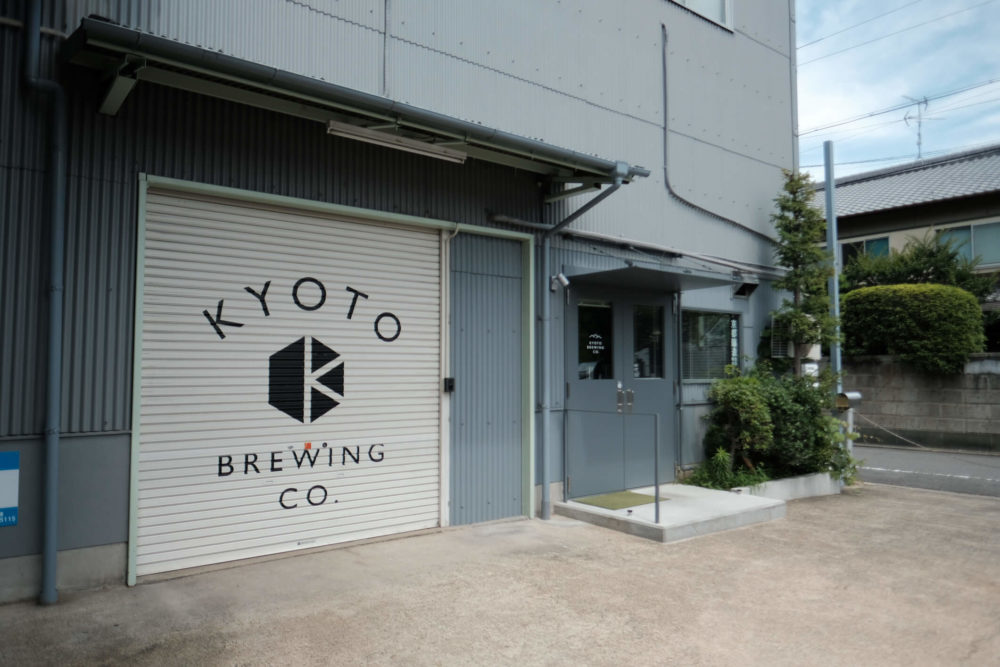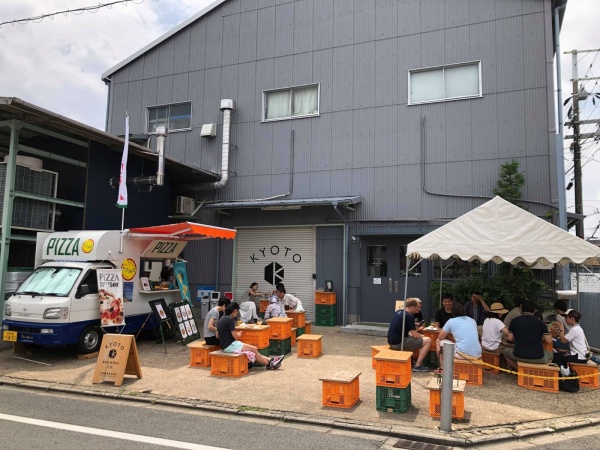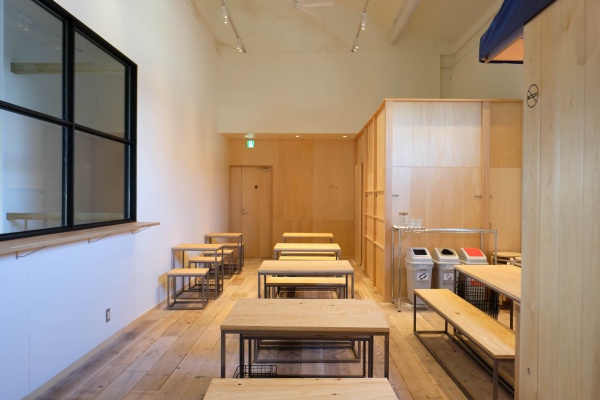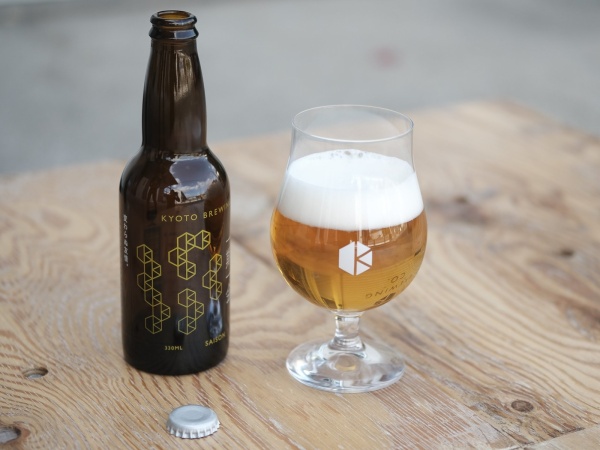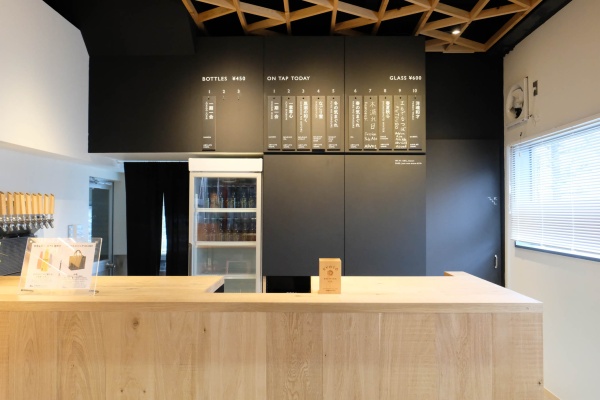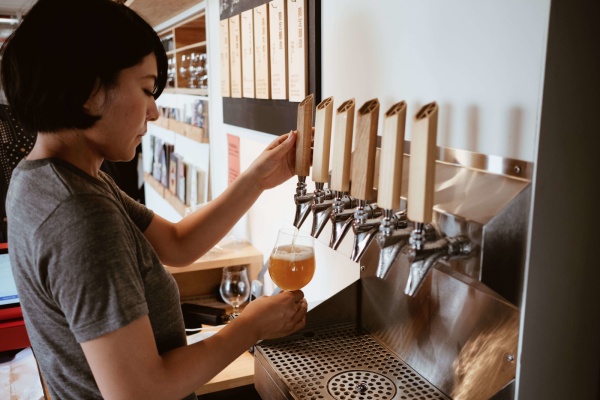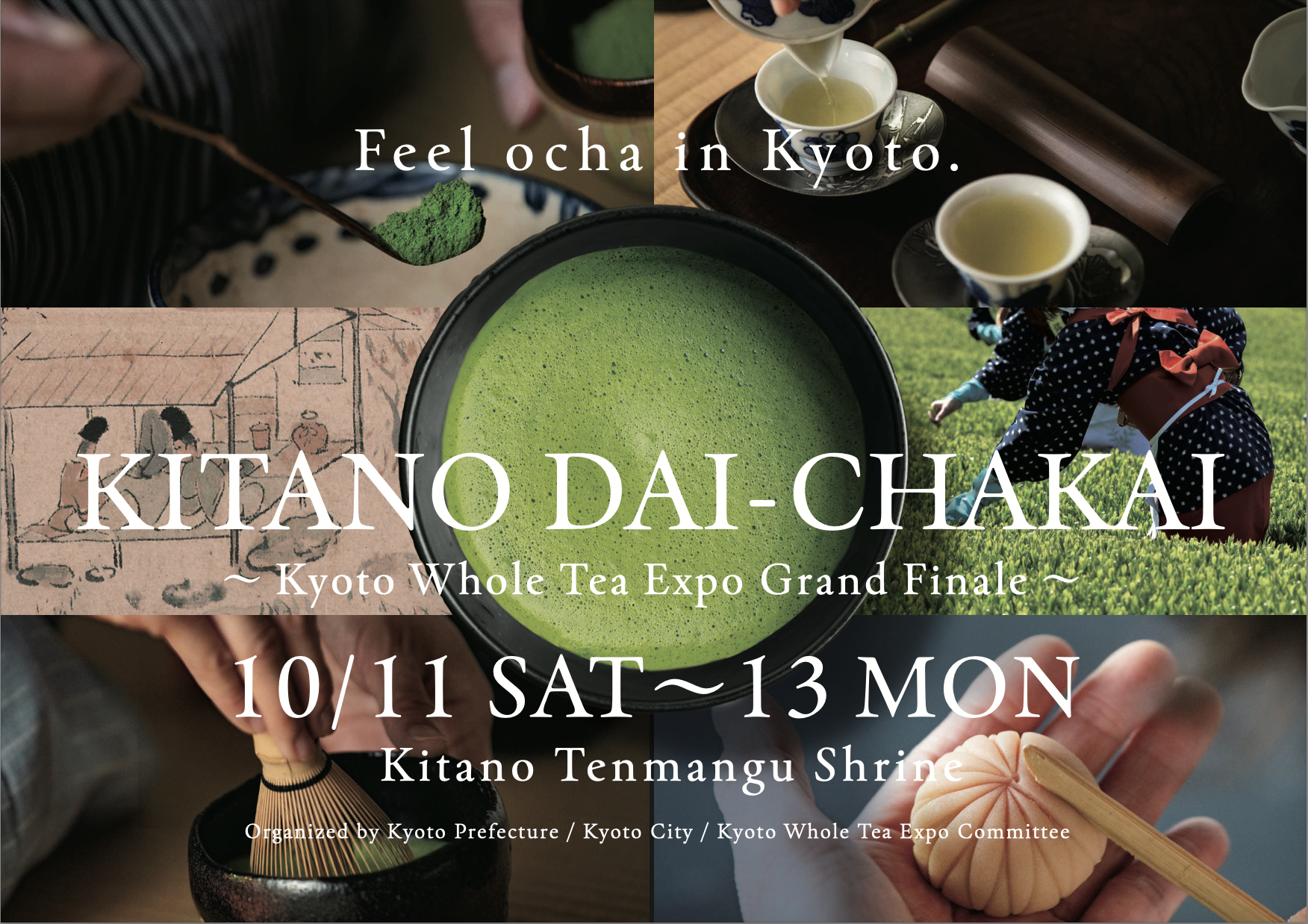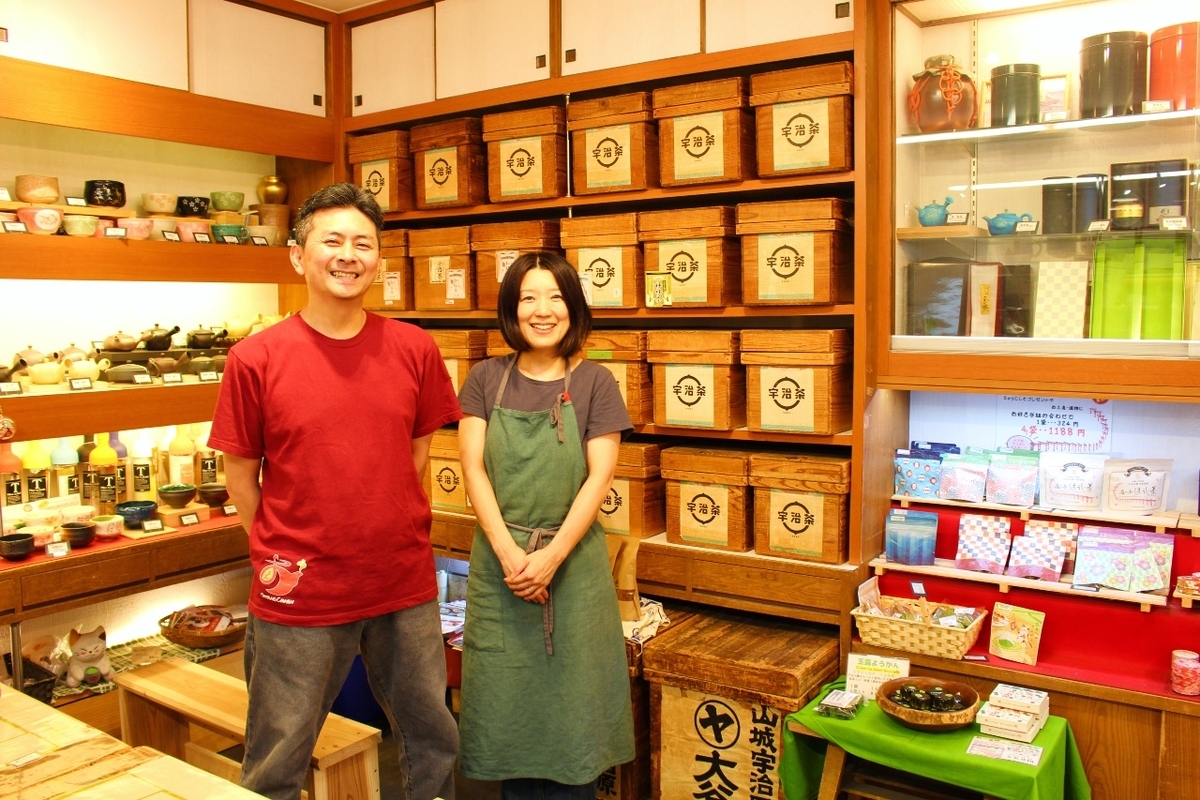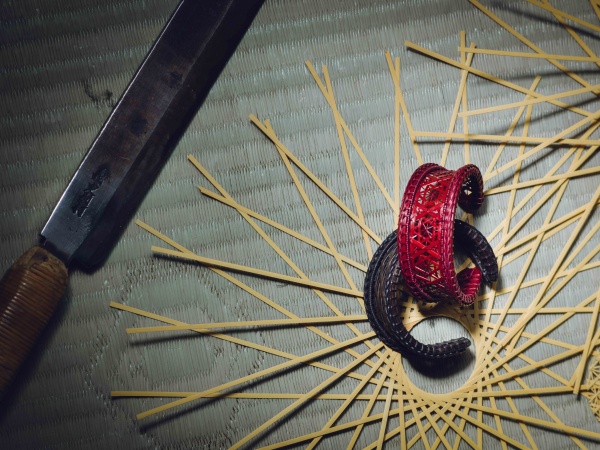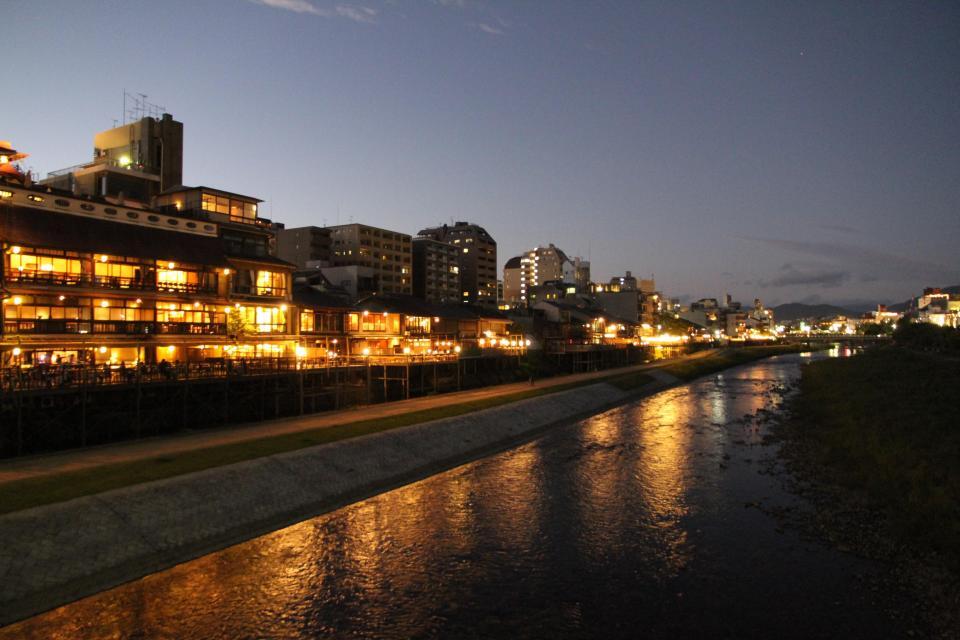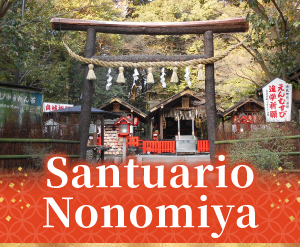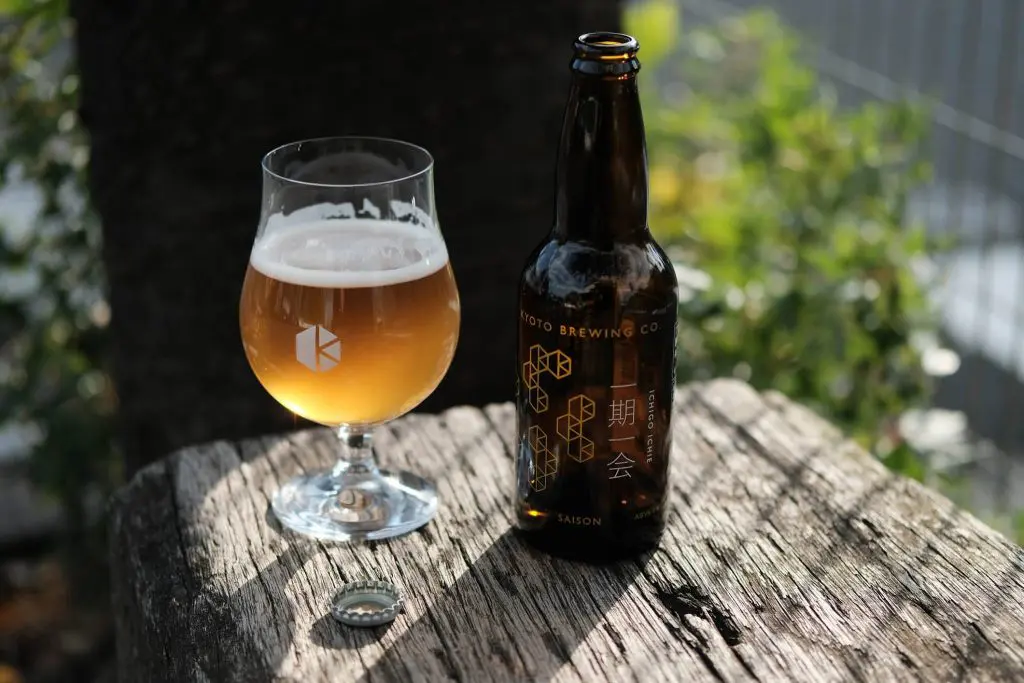
Entrevistador:
Este tema lo abordaste en tu página web, pero ¿puedes contarnos nuevamente el motivo por el que abriste una cervecería en Kioto?
Chris:
Al principio, fue sencillo. Llevo 13 años viviendo en Kioto. Trabajaba en la administración de la Universidad Ritsumeikan, pero quería convertir mi afición, la elaboración de cerveza, en un trabajo. Quería hacer lo que me apasiona en la ciudad que tanto amo. Kioto es un equilibrio perfecto entre lo urbano y lo rural. Hablé con los otros dos (los cofundadores Paul y Ben) e investigué sobre diferentes lugares, y el espíritu artesanal de Kioto me pareció muy atractivo. Elaborar cerveza es un arte, después de todo. Puede que lo que hacemos sea diferente al de otros artesanos, pero compartimos el mismo espíritu creativo, así que pensé que podríamos adaptarnos a Kioto.
Entrevistador:
¿Por qué elegiste esta ubicación específica en el lado sur de Kioto?
Chris:
No teníamos preferencias claras en cuanto a la ubicación. De los aproximadamente 20 locales que vimos, elegimos este porque tenía la mejor distribución para una cervecería y estaba cerca del pueblo.
Entrevistador:
Mencionaste que llevas 13 años viviendo en Kioto. ¿Cuáles son tus lugares favoritos de Kioto?
Chris:
Me gusta escalar montañas, así que el monte Hiei y el monte Kiyotaki son geniales, aunque últimamente he estado demasiado ocupado para visitarlos. También me gusta ir al santuario Kitano-tenmangu y dirigirme al Odoi (un montículo de tierra) en los terrenos del santuario, que está cerca de mi casa, para sentarme bajo los zelkovas a tomar cerveza. (Risas)
Entrevistador:
¡Eso suena genial! (Risas) Así que todavía vives en la zona.
Chris:
Solía ir al trabajo en bicicleta porque salíamos temprano por la mañana y terminábamos tarde por la noche. Ahora que el horario se ha acomodado, tomo un autobús exprés que me lleva directamente aquí.
Entrevistador:
¿Trabajas temprano en la mañana?
Chris:
Llego sobre las siete cuando tenemos preparación, y sobre las nueve en días normales. Termino sobre las siete u ocho de la noche. Al principio, preparábamos constantemente, y a menudo me quedaba aquí hasta la medianoche. (Risas)
Entrevistador:
La preparación debe ser mucho trabajo.
Chris:
Usamos 400 kilogramos de malta cada vez. Aquí (el espacio de pulverización de malta en el segundo piso), lo tenemos configurado para almacenar 1000 kg + 1000 kg de malta. Usamos el mismo ascensor que se usaba cuando el edificio era un aserradero y traemos la malta a esta sala cuando recibimos una entrega.

Entrevistador:
Así que han conservado algunas de las antiguas instalaciones que había aquí. ¿De dónde obtienen sus materiales?
Chris:
La malta proviene de Alemania, Bélgica y el Reino Unido. La malta japonesa es demasiado cara. (Risas) El lúpulo proviene de Estados Unidos y Europa. En Japón, antes solo cultivaban lúpulo para grandes empresas. Empezamos a comprar lúpulo producido en Yosano Town, Kioto, hace unos cuatro años, y lo usamos un poco cada año. La cantidad que usamos todavía es pequeña, pero si todo va bien, podremos elaborar nuestra cerveza con lúpulo de Kioto.
Entrevistador:
Parece que no hay muchos materiales para elaborar cerveza en Japón.
Chris:
Es cierto. Los grandes productores de cerveza están obligados a utilizar un cierto porcentaje de materias primas producidas en Japón, por lo que cuentan con sus propias granjas. Por otro lado, las pequeñas cervecerías tienden a utilizar productos importados.
Entrevistador:
Los lugares turísticos suelen tener cervezas locales. ¿Suelen ser de grandes productores?
Chris:
Los grandes productores no suelen participar. Por eso, creo que sus materiales tienden a importarse del extranjero. En la mayoría de los casos, solo el agua es de origen local. Esta es una de las razones por las que muchas cervecerías que se preocupan por su sabor han empezado recientemente a usar el término «cerveza artesanal» en lugar de «cerveza local».
Entrevistador:
No me había dado cuenta de que esa era la razón del auge del término "cerveza artesanal". ¿Cuántas personas trabajan actualmente en la Kyoto Brewing Company?
Chris:
Elaboro la cerveza con tres ayudantes cerveceros. Incluyendo ventas y contabilidad, tenemos un total de once empleados a tiempo completo. También contamos con personal a tiempo parcial en la sala de degustación.
Entrevistador:
Entonces, ¿también contratáis nuevos empleados?
Chris:
Hemos recibido bastantes consultas. Hubo dos auges de la cerveza artesanal en Japón. El primero fue en los 90, lo que provocó un aumento repentino en las ventas, pero la cerveza no sabía muy bien y no tuvo éxito. (Risas) Actualmente estamos experimentando el segundo auge, y estamos viendo cómo abren cervecerías personas amantes de la cerveza y con un gusto exquisito por su sabor. Creo que esta es la razón por la que recibimos tantas consultas.
Entrevistador:
¿Es popular la cerveza artesanal en el extranjero?
Chris:
Se dice que la cerveza artesanal se originó en Estados Unidos, donde se produce desde la década de 1970. En los últimos años, ha experimentado un aumento repentino, y la participación estadounidense es de aproximadamente 141 TP3T. Por otro lado, la participación de Japón es de tan solo 0,11 TP3T.
Entrevistador:
¿Las cervecerías tienen relaciones entre sí?
Chris:
En Estados Unidos sí. También tienen relaciones en Japón, y otras cervecerías te enseñarán cosas si la relación se desarrolla. Sin embargo, en algunas cervecerías japonesas aún existe una tendencia cultural a no enseñar a extranjeros.
Entrevistador:
¿Cómo son personalmente tus relaciones con otras cervecerías?
Chris:
Hay cervecerías que me gustaban desde que elaboraba cerveza como hobby. Forjé relaciones con ellas saludándolas en eventos y colaborando como voluntaria en el Craft Beer Fest Kyoto, que se celebra anualmente. Cuando llegó el momento de fundar nuestra propia cervecería, me tranquilizó tener gente a quien asesorar.
Entrevistador:
Supongo que ayuda que te apasione. ¿Qué crees que es lo más importante de elaborar cerveza?
Chris:
Me han preguntado esto antes y no tenía una buena respuesta. (Risas) Lo más importante de dirigir una cervecería es poder elaborar el tipo de cerveza que nos gusta. Esto es posible porque podemos juzgar si nuestra cerveza sabe bien o no. Seleccionamos la levadura y el lúpulo con cuidado. Usamos principalmente levadura belga y lúpulos americanos con mucha fuerza. Podrías pensar que soy yo quien elabora la cerveza, pero en realidad, solo elaboro el mosto. Al final, es la levadura la que elabora la cerveza. Crear un entorno donde la levadura pueda prosperar es mi trabajo, y eso es lo desafiante e interesante.
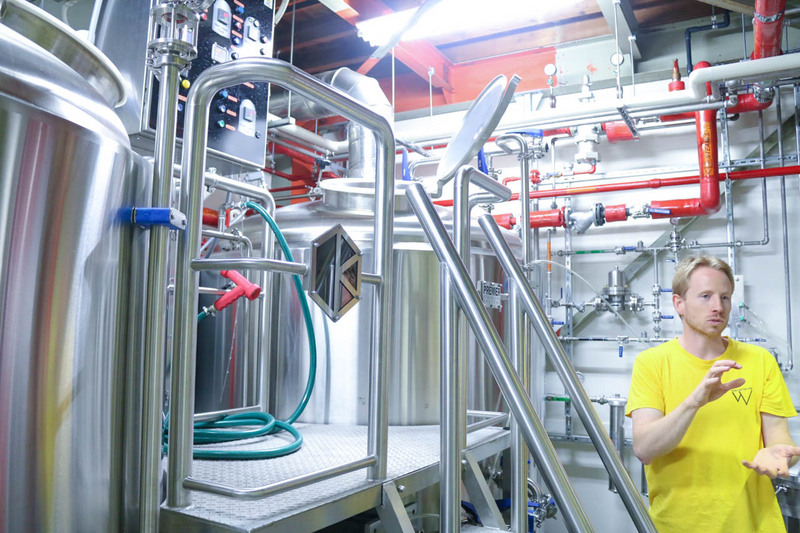
Entrevistador:
Me fascina el proceso de elaboración de cerveza. ¿Qué te llevó a abrir una taberna?
Chris:
Los cerveceros quieren ver las caras de quienes beben su cerveza, y los bebedores quieren ver las caras de quienes la elaboran. Algunos productores importantes tienen salas de degustación, pero no creo que sean lo suficientemente agradables. Antes de abrir nuestra sala de degustación, los eventos eran el único momento en el que podíamos ver a la gente bebiendo nuestras cervezas. Me alegra que ahora tengamos un lugar donde podemos ver a la gente disfrutar de nuestras cervezas y escuchar sus impresiones directamente de ellos. Creo que también es una experiencia agradable para los clientes.
Entrevistador:
Me gustaría concluir preguntándole cuáles son sus objetivos para el futuro.
Chris:
Queremos producir un suministro estable de cerveza de alta calidad. Confiamos en nuestra calidad, pero nuestro negocio aún no es estable. Queremos ser una cervecería donde los clientes vengan y nos digan: «Su cerveza siempre es interesante y sabrosa».
Instrucciones
25-1 Nishikujo Takahatacho Minami-ku, Kioto-shi, Kioto-fu 601-8446
Teléfono
+81-75-574-7820
Sitio web
Compañía cervecera de Kioto

